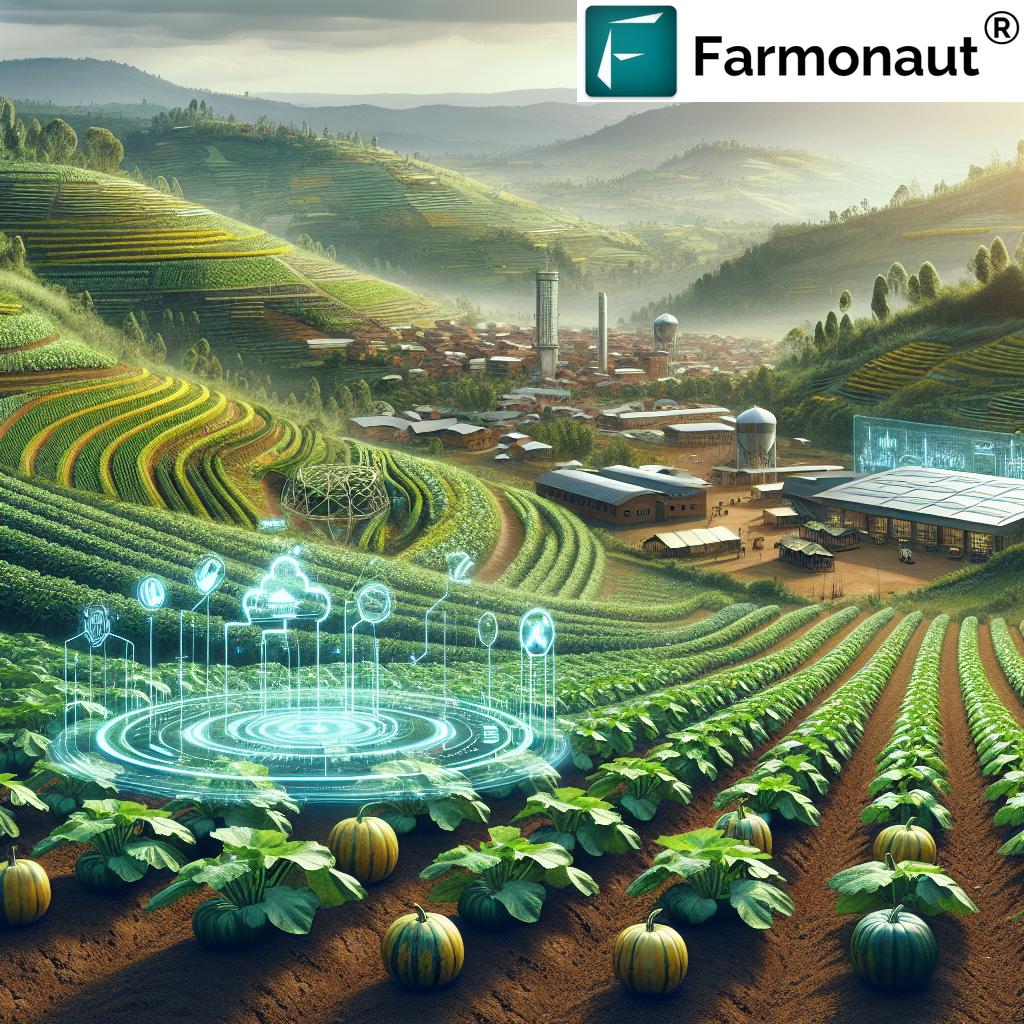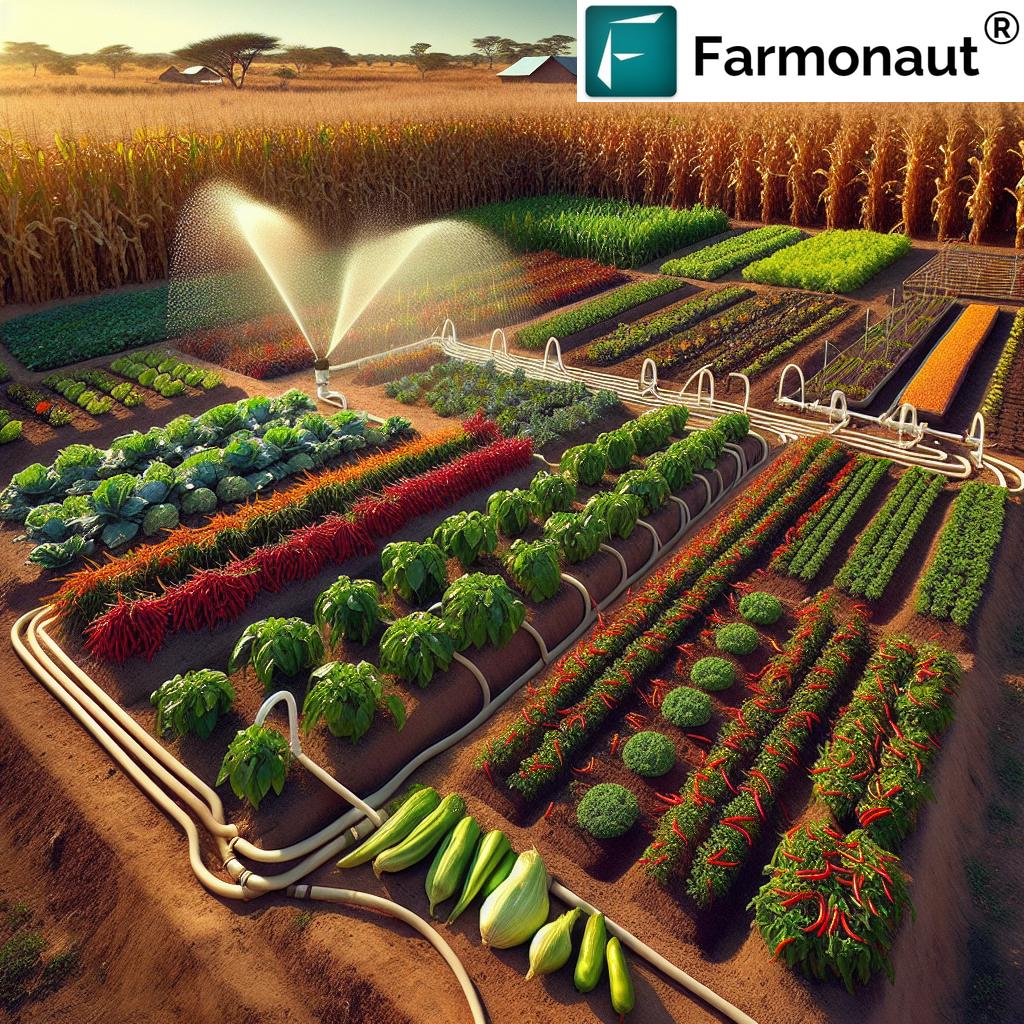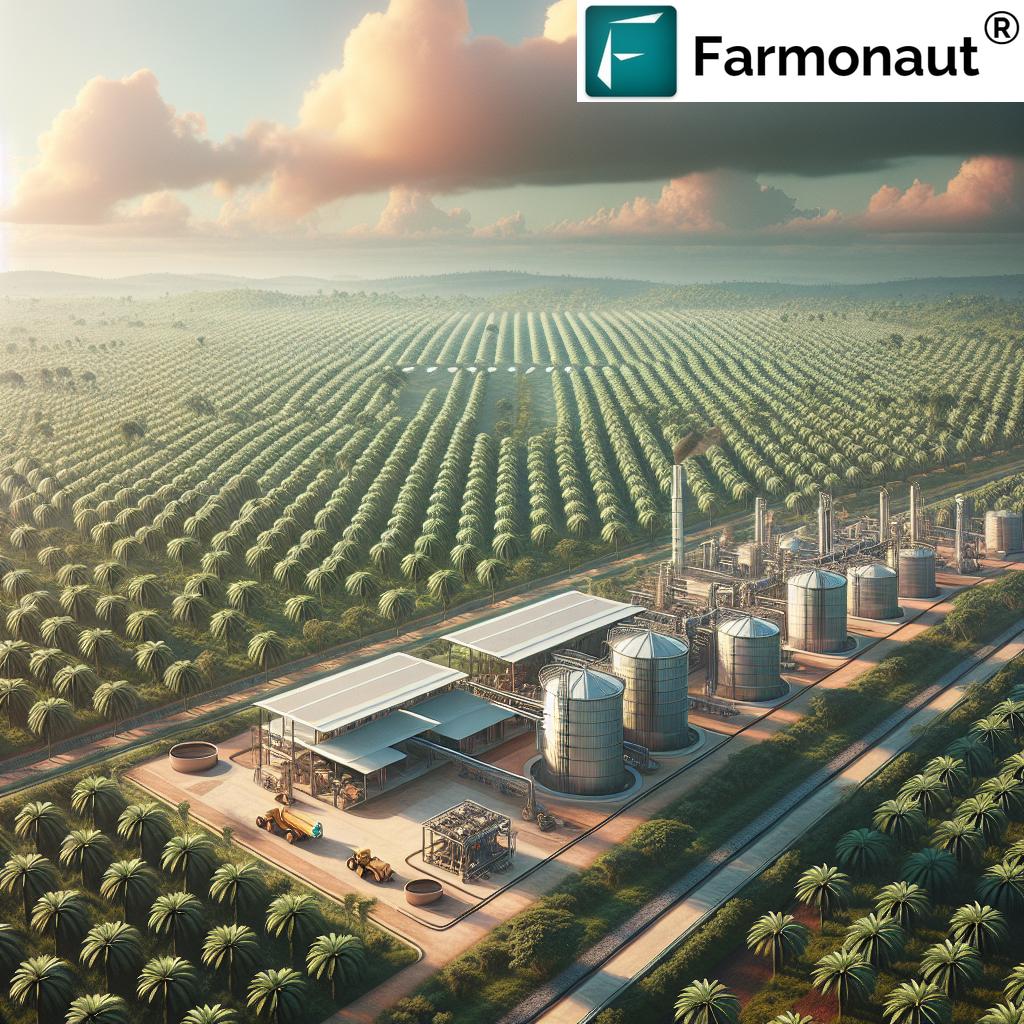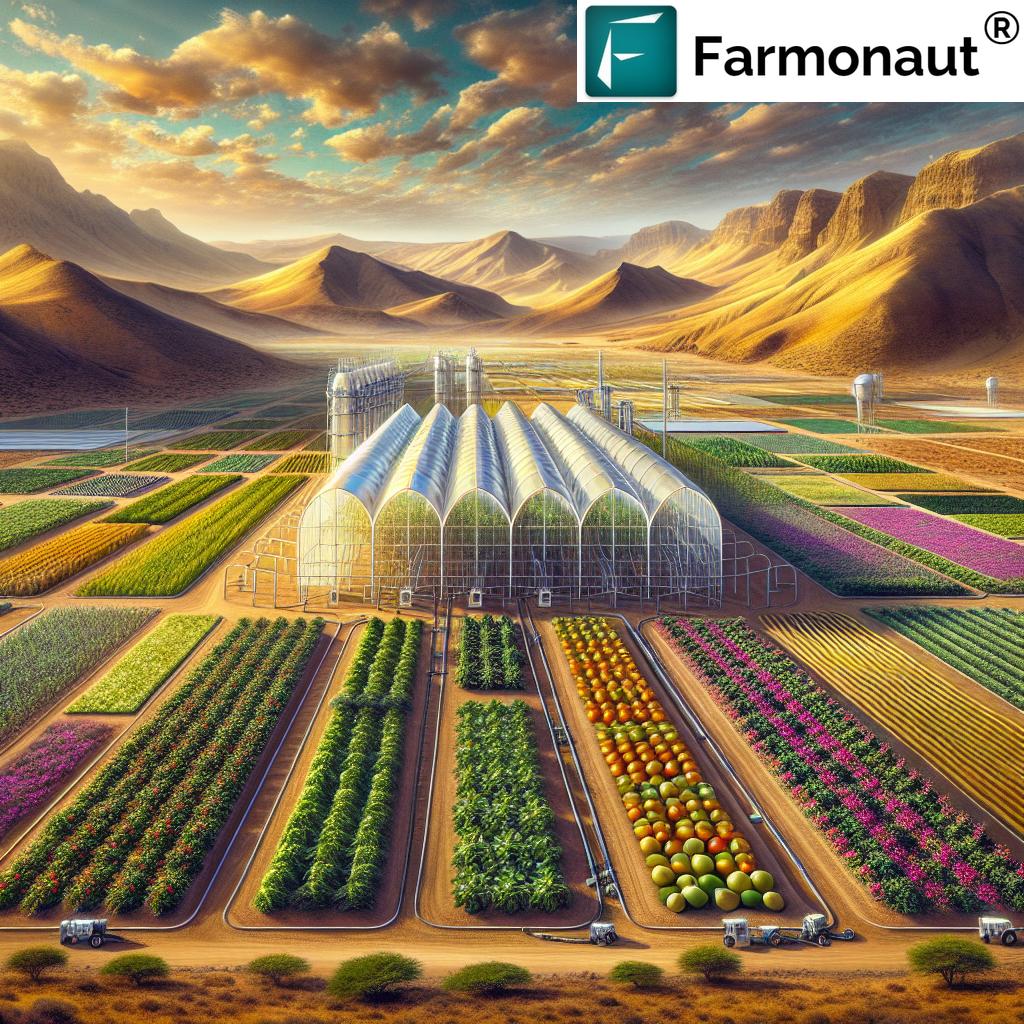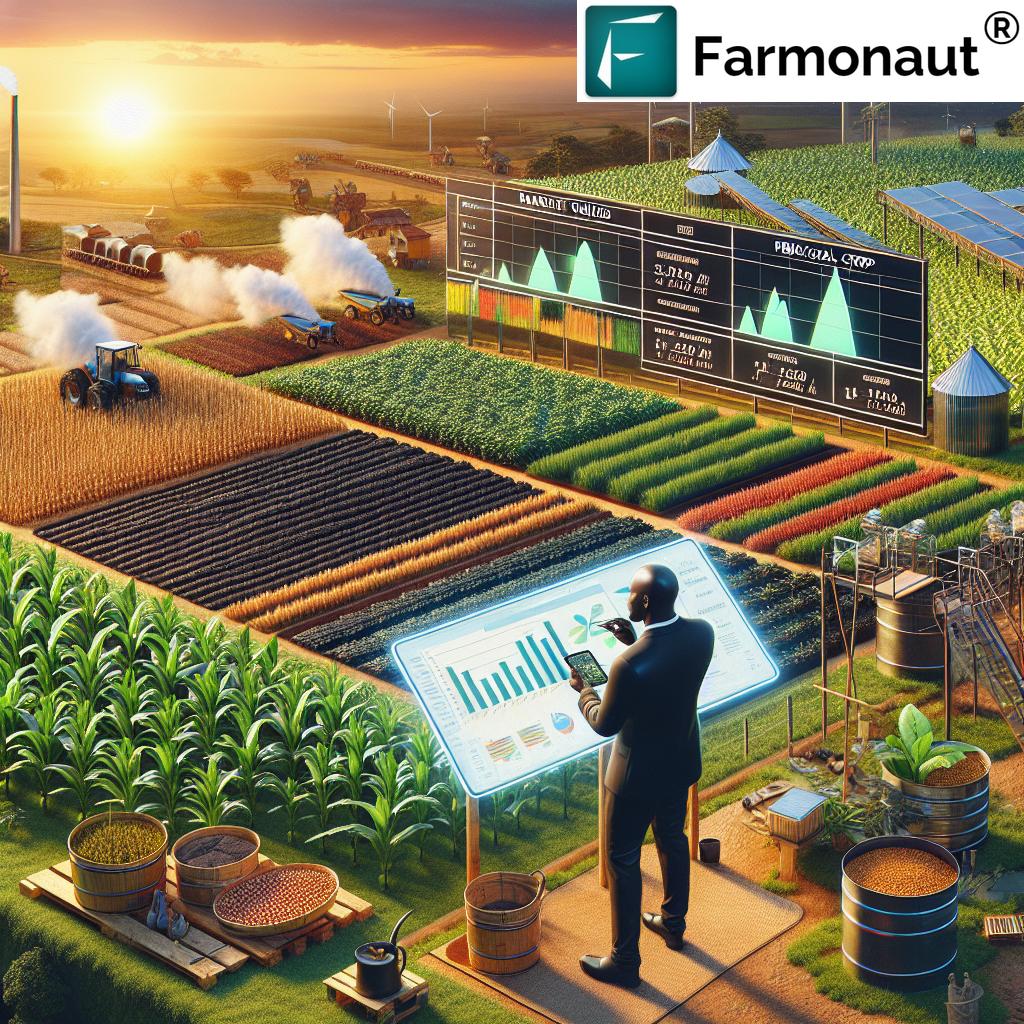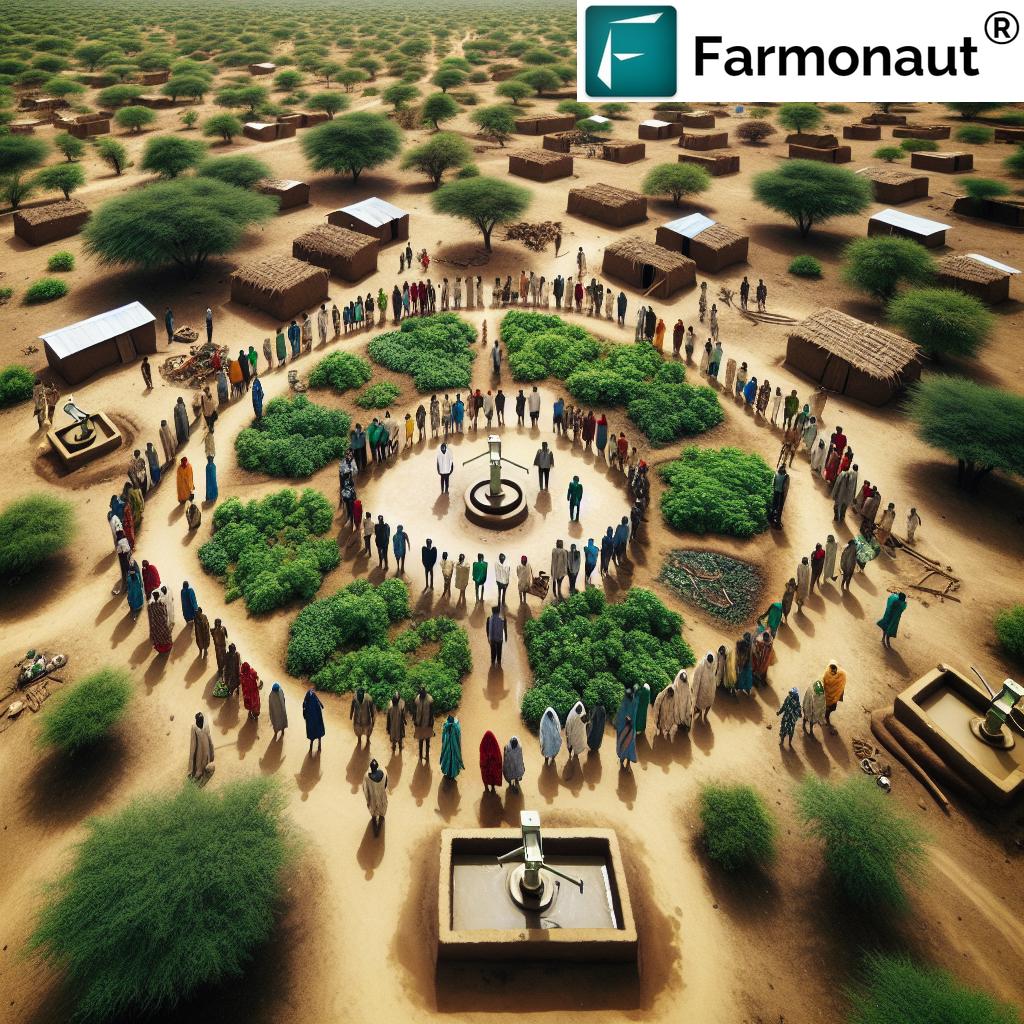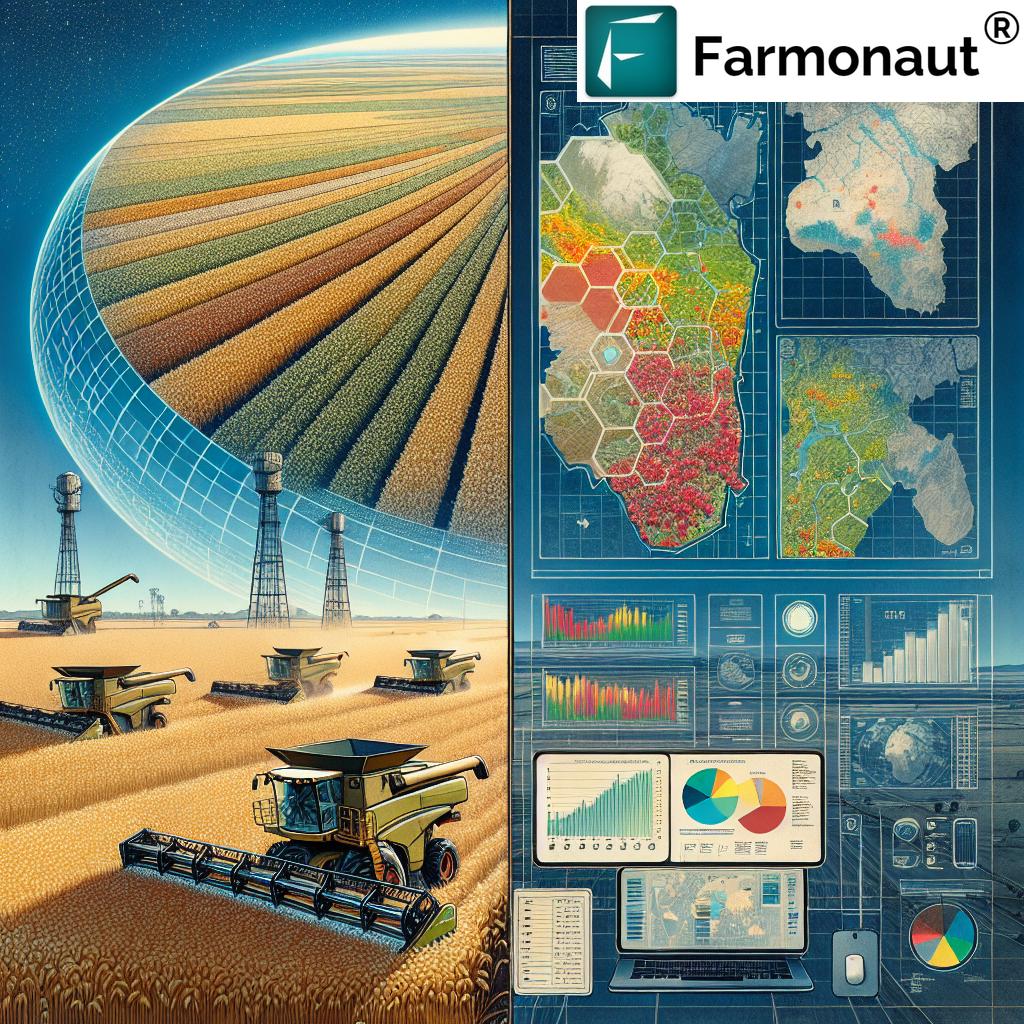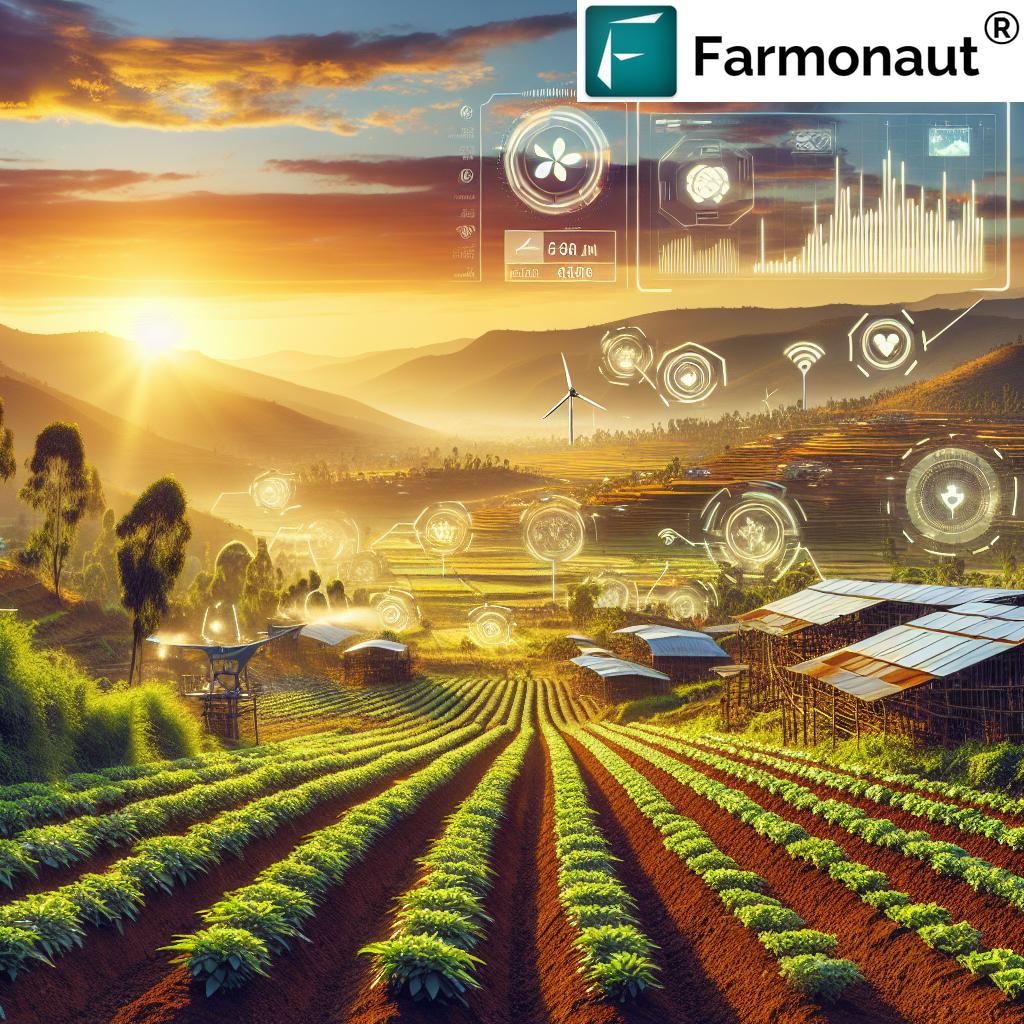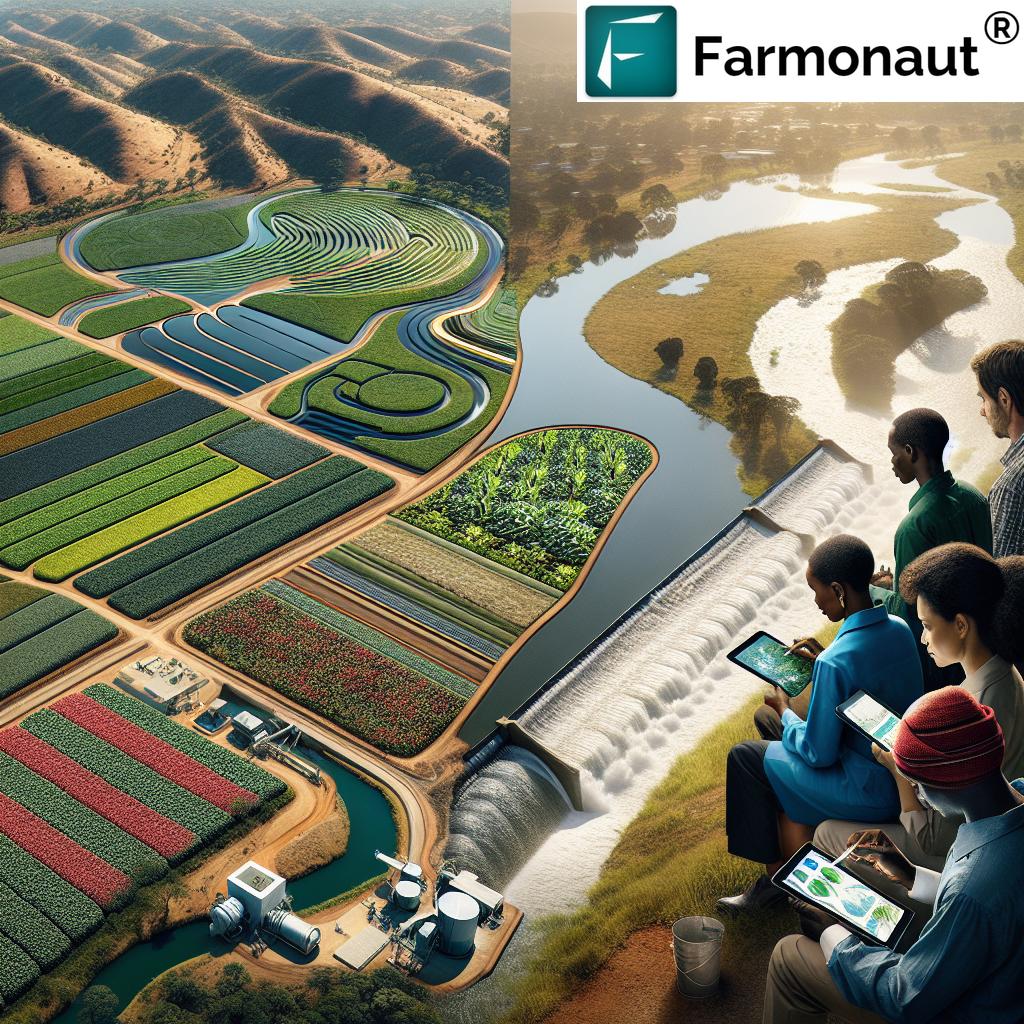“In 2023, over 40% of Tanzanian farmers adopted organic fertilizers to boost soil health and sustainability.”
Sustainable Agriculture Tanzania: 7 Powerful Trends for 2025
Sustainable Agriculture in Tanzania: Paving the Way for a Resilient Farming Future in 2025
- Introduction
- Current Landscape of Agriculture in Tanzania
- The Imperative for Sustainable Agriculture Tanzania
- Innovations and Practices Driving Sustainability
- 7 Powerful Trends Shaping Sustainable Agriculture in Tanzania for 2025
- Trend Comparison Table: Sustainable Agriculture Tanzania 2025
- Role of Government and Market Dynamics
- Challenges and the Way Forward
- Farmonaut: Satellite Technology for Sustainable Agriculture Tanzania
- Frequently Asked Questions
- Conclusion
Introduction: Paving the Way for Sustainable Agriculture in Tanzania
Agriculture remains the backbone of the Tanzanian economy, engaging over 65% of the population and contributing approximately 30% to the nation’s GDP. As we look toward 2025, sustainable agriculture Tanzania emerges not just as a trend, but as a vital pathway for food security, improved livelihoods, and enhanced environmental stewardship. The challenges—ranging from climate change and land degradation to market fluctuations—underscore the need for sustainable transformation in agriculture Tanzania.
In this comprehensive guide, we explore the current landscape of agriculture in Tanzania, analyze innovative farming practices, highlight the challenges faced by farmers, and identify the key trends shaping a resilient and environmentally friendly future for the Tanzania agriculture market by 2025.
Current Landscape of Agriculture in Tanzania
Agriculture in Tanzania is characterized by a predominantly smallholder-driven landscape. Tanzanian farmers cultivate a wide variety of crops—including maize, rice, coffee, tea, cashew nuts, and cotton—forming the bedrock of food and economic security.
However, the sector faces constraints such as low productivity, limited access to technology, inefficient value chains, and increasing vulnerability to changing weather patterns. Climate change is intensifying droughts and floods, directly impacting farming systems and threatening food security for millions.
- Demographic: Over 65% population engaged in agriculture.
- Economic: Sector contributes about 30% to GDP.
- Diversity: Crops include maize, rice, coffee, tea, cashew, nuts, and cotton.
- Dominance: Smallholders produce the majority of Tanzania’s crops.
- Challenges: Low productivity, land degradation, market inefficiency, and weather unpredictability.
These challenges point to an urgent need to promote sustainable agriculture Tanzania by supporting improved technologies, extension services, and environmentally friendly practices.
The Imperative for Sustainable Agriculture Tanzania
Sustainable agriculture Tanzania aims to balance economic viability, environmental stewardship, and social equity. This approach is central to the future of agriculture in Tanzania and prioritizes:
- Soil health management—to preserve resources and boost productivity.
- Water conservation—essential for drought-prone areas.
- Crop diversification and integrated systems—to enhance resilience.
- Reduction of dependency on chemical fertilizers and pesticides.
- Preservation of biodiversity—ensuring lasting ecological balance.
This imperative is recognized at policy and grassroots levels, and is seen as a direct pathway toward bolstering food security and promoting Tanzania’s sustainable development.
Innovations and Practices Driving Sustainability in Tanzania Agriculture Market
Over recent years, several innovative practices have transformed Tanzania farming and are driving the sector toward long-term sustainability. These practices pave the way for a resilient future and include:
Agroforestry: Trees, Crops, and Livestock—Integrated for Resilience
Agroforestry—the integration of trees, crops, and livestock—has gained traction across rural Tanzania. It enhances soil fertility, prevents erosion, boosts biodiversity, and provides additional income streams from timber and non-timber products. Examples abound in the upland coffee and cashew growing regions, where farmers now nurture shade trees alongside these vital commodities.
Conservation Agriculture: Healthier Soil, Higher Yields
Conservation agriculture—featuring minimum tillage, cover cropping, and mulching—is increasingly adopted by smallholders in Tanzania. These methods help to increase soil moisture retention and reduce erosion.
Did you know?
“Conservation agriculture practices increased by 35% among Tanzanian smallholders between 2020 and 2024.”
Organic Farming: Rising Demand and Export Opportunities
Driven by rising international demand, organic farming has become a vital strategy for Tanzania’s export crops, especially coffee and tea. Reducing the use of chemical fertilizers and pesticides not only improves soil health but also boosts farmers’ incomes by meeting sustainability standards for niche markets abroad.
Climate-Smart Agriculture Tanzania: Building Resilience
Climate-smart agriculture (CSA) is a comprehensive approach that integrates resilience, productivity, and emissions reduction. It promotes drought-resistant crops, efficient irrigation, and resource-smart practices that help communities adapt to changing climate patterns.
Digital Monitoring and Advisory Systems
The increasing availability of digital technologies provides farmers access to real-time weather updates, crop health monitoring, and market information, enhancing their ability to make informed decisions, reduce risks, and improve yields. These systems are particularly crucial for rural areas with limited extension services.
7 Powerful Trends Shaping Sustainable Agriculture Tanzania for 2025
Let’s analyze the seven trends that will define the future of sustainable agriculture Tanzania by 2025, offering tangible solutions to the sector’s most pressing challenges and helping to bolster food security and viability for millions.
- Climate-Smart Agriculture (CSA): Integrating adaptive practices to mitigate the impact of climate change and ensure consistent yields amid changing weather patterns.
- Water Conservation and Irrigation Efficiency: Deploying techniques and technology to reduce water use, improve irrigation, and build resilience to droughts.
- Organic and Regenerative Farming: Pioneering methods that restore soil health, minimize dependency on chemicals, and meet global market demands for sustainable products.
- Agroforestry Expansion: Integrating trees with crops and livestock to enhance biodiversity, improve land use, and create multiple income streams.
- Precision Agriculture and Digital Tools: Leveraging satellite data, AI, and digital apps to guide management and decision-making for farmers.
- Renewable Energy Integration: Scaling up solar-powered irrigation and farm operations to reduce greenhouse gas emissions and cut costs.
- Digital Agriculture and Data-Driven Extension Services: Expanding farmer access to advisory services and market information via mobile and web platforms.
Trend Comparison Table: Sustainable Agriculture Tanzania 2025
| Trend | Description | Estimated Impact by 2025 | Example/Innovation in Tanzania |
|---|---|---|---|
| Climate-Smart Agriculture | Adaptive farming that mitigates or responds to climate change through resilient crops, efficient irrigation, and timely information. | 30% more farmers adopting drought-resistant crops; 20% increase in average yields; 15% reduction in climate-related losses. | Scaling CSA projects in central Tanzania; expanded drought forecasting and advisory services. |
| Water Conservation & Irrigation Efficiency | Technologies and practices to minimize water use and loss, manage irrigation, and harvest rainwater efficiently. | Adoption of micro-irrigation and solar pumps; up to 40% water savings; better yields during dry seasons. | Growth of solar-powered pump projects; Tanzanian government incentives for irrigation tech. |
| Organic & Regenerative Farming | Practices that restore soil health, eliminate chemical use, and improve ecosystem balance. | 40% more farmers using organic fertilizers (2023); increased organic tea/coffee exports. | Organic cashew, tea, and coffee cooperatives targeting export markets. |
| Agroforestry Expansion | Land use practices integrating trees, reducing erosion, and creating diversified crops/livestock systems. | Total agroforestry farms up by 25%; 18% higher average incomes for practicing farmers. | Widely adopted in Kilimanjaro coffee and cashew areas. |
| Precision Agriculture & Digital Tools | Utilizing satellites, sensors, and AI for informed farming decisions and resource optimization. | Digitally managed land area tripling; 70% farmers with mobile/web access to farm data. | Satellites monitor soils in Morogoro; mobile advisory apps penetrate rural markets. |
| Renewable Energy Integration | Harnessing solar and other renewables for on-farm power needs, reducing emissions and costs. | 50% of new irrigation schemes solar; 10% drop in diesel costs for rural farms. | Solar pump deployments in Dodoma and semi-arid regions. |
| Digital Agriculture & Data-Driven Extension | Broadening access to digital advisory, price, and weather services; boosting knowledge transfer. | 80% of extension workers use digital tools; 45% of farmers access weather/market data via mobile/web. | WhatsApp advisory groups, government crop-market platforms, mobile extension advice in Swahili. |
The Role of Government and Market Dynamics in Sustainable Agriculture Tanzania
The government is central in guiding and incentivizing the sustainable transformation of the sector. Key roles and market shifts include:
- Robust Policy Support: Efforts like the Agriculture Sector Development Programme (ASDP) focus on research, irrigation, extension services, and strengthening local value chains.
- Infrastructure Investments: Funding for rural roads, storage facilities, and market access networks reduces post-harvest losses.
- Expanding Export Markets: Strong demand for coffee, tea, and horticulture incentivizes sustainability—export markets are prioritizing certified and sustainable products.
The tanzania agriculture market is further shaped by shifting consumer requirements, both locally and abroad, and the rising value placed on environmental stewardship and product traceability.
Learn more about how transparent and secure supply chains foster trust in agriculture. Our blockchain-based product traceability solution ensures every stage of Tanzania’s agriculture journey is visible and verifiable for global and local markets.
Challenges and the Way Forward for Sustainable Agriculture Tanzania
Despite substantial progress, challenges still impede the adoption of best practices among farmers in Tanzania. Key hurdles include:
- Limited financing: Smallholders often lack access to affordable credit or insurance for investments in sustainable technologies.
- Knowledge Gaps: Not all farmers benefit equally from advisory services or training.
- Land Tenure Insecurity: Unclear or insecure land rights reduce motivation for long-term soil and water conservation investments.
- Infrastructure Deficits: Rural areas face challenges with roads, storage, and logistics, lowering their ability to bring crops to market sustainably.
- Value Chain Inefficiencies: Long supply chains mean higher costs and post-harvest losses, reducing farm profitability.
Pathways Forward
To promote sustainability and address challenges in agriculture Tanzania in 2025 and beyond, Tanzania should:
- Strengthen public-private partnerships for innovation and investment.
- Expand digital extension services and technology transfer to reach more farmers.
- Promote policies that secure land tenure and incentivize sustainable actions.
- Invest in infrastructure and market linkages for rural growers.
- Support financial inclusion and affordable insurance products—read about satellite-verified crop loans and insurance designed to empower Tanzanian farmers with more accessible finance and risk protection.
Explore our carbon footprinting service to help Tanzanian agriculture measure and reduce greenhouse gas emissions—essential for climate-smart and export-oriented markets.
Farmonaut: Satellite Technology for Sustainable Agriculture Tanzania
Modern technologies are transforming the Tanzania farming landscape, offering affordable, actionable insights for millions of farmers. At Farmonaut, we deliver satellite-based solutions that enable:
- Real-time crop monitoring with multispectral imagery to gauge soil health, crop stress, and land use.
- Jeevn AI advisory—providing tailored, location-specific advice on weather, crop requirements, and resource allocation.
- Blockchain-based traceability for enhancing market trust in Tanzanian agricultural products.
- Fleet and resource management tools that optimize logistics across rural and large-scale farm operations. Fleet management can significantly cut transport and input costs for Tanzanian growers.
- Environmental impact monitoring, including carbon footprinting for compliance and sustainability benchmarking.
- Affordable, scalable, multiplatform solutions accessible via web and mobile apps:
- API integration for developers and agribusinesses (see: Farmonaut API | API Developer Docs).
Our technologies bring data-driven decision support, transparency, sustainability, and productivity boosts to the agriculture Tanzania market—helping the nation stride confidently toward the future.
If you manage multiple farms, our large-scale farm management platform empowers you to monitor, report, and optimize across all your holdings—ideal for agribusiness and cooperative leaders.
Frequently Asked Questions: Sustainable Agriculture Tanzania
What is sustainable agriculture Tanzania and why is it vital for 2025?
Sustainable agriculture Tanzania describes farming that balances economic, environmental, and social objectives. By 2025, sustainability is essential to overcome climate change, land degradation, and resource limits—ensuring food for the future while protecting natural resources.
What are the top crops driving the agriculture Tanzania market?
Tanzania’s leading crops include maize, rice, coffee, tea, cashew nuts, and cotton. Export crops like coffee and tea see growing demand for sustainable production and organic certification.
How are Tanzanian farmers adopting technology for sustainable practices?
Farmers are utilizing digital platforms, satellite monitoring, mobile apps, and AI-based advisory systems to access weather forecasts, crop health alerts, and market prices—empowering them to reduce costs, improve yields, and minimize risks.
What challenges remain for sustainable agriculture Tanzania?
Barriers include limited access to finance, knowledge gaps, insecure land tenure, and infrastructure deficits. Strategic investment in extension services, technology, and policy support is required to close these gaps.
How does Farmonaut support sustainable agriculture Tanzania?
We offer satellite-driven monitoring, AI-based crop advisory, blockchain-powered traceability, resource tracking, and digital tools that help Tanzanian growers optimize operations and meet market expectations for sustainable, transparent agriculture.
Where can I access Farmonaut’s solutions?
You can access Farmonaut’s innovative tools via our web/mobile app, Android app, iOS app, and through API integrations for developers and agribusinesses.
Conclusion: Paving Tanzania’s Pathway to Sustainable, Resilient Agriculture in 2025
Sustainable agriculture Tanzania is not simply an option—it is a necessity for the future of the nation. As we stride toward 2025 and beyond, integrating innovations—from agroforestry and organic farming to precision agriculture and digital extension—will be distinctly central.
It will take determined efforts from farmers, the government, and the private sector to bolster food security, promote environmental stewardship, and deliver lasting livelihoods for all Tanzanians. With affordable and powerful solutions—such as those provided by our team at Farmonaut—Tanzania’s farming communities can confidently overcome challenges and thrive in a competitive, sustainable, and resilient agricultural market.
If you’re committed to driving change and wish to integrate transformative technology into your farm or agribusiness, discover our platform and turn insights into action for a sustainable Tanzania.




